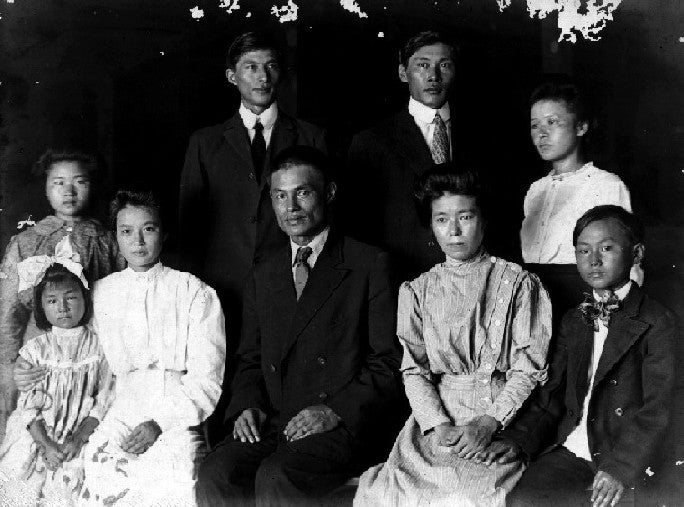Introduction

Front row, left to right: Toki, Moto (wife of Hachitaro), Kichimatsu, Fuji, Taro; Back row, left to right: a maid, Hachitaro, Tora, and a cousin.
Kichimatsu Kishi was a stern but fair man who ruled over the colony as a father might. Whenever minor arguments arose between the young men in the colony, Kishi was there to settle them. With the welfare of these young men of the colony at heart, Kishi responsibly made sure their parents were aware. To Kishi, the state of this colony and its residents was most important. This colony was the Kishi colony, a farming settlement founded and owned by Kichimatsu Kishi, and home to many other Japanese Texans. [1]
In the early 20th century, many Japanese Texans moved to the Gulf Coast in an attempt to farm rice using grains brought from Japan or moved to the Rio Grande Valley to pursue truck farming. The Kishi Colony, however, not only did all of the above, but also discovered oil in the process. Spanning over 9,000 acres around the Terry Community, sandwiched between Beaumont and Orange in Orange County, is the colony that became the home of the following Japanese Texan families: Kishi, Hirasaki, Nagai, Kondo, Okabayashi, and Tanamachi, among others. [1]
Being the founder of the farming settlement meant that Kichimatsu Kishi was in charge of ensuring the colony’s prosperity and thus shouldered many decision-making responsibilities. When he first arrived in Texas, he decided that the early colony would focus on the cultivation of rice. Aiming for stable profits during the 1920’s, Kishi shifted the focus of the colony’s farming to a more broad truck farming with the central crop being cabbage along with cultivating various fruits and vegetables including: potatoes, onions, corn, cucumbers, spinach, celery, tomatoes, lettuce, carrots, beets, and strawberries. He made decisions over what crops to add to the farm as he experimented with even more produce such as fig and orange orchards to increase the success of the colony. Kishi did not plan for the cultivation of a variety of crops when he first arrived in Texas, yet the farm evolved with time, distributing high-quality produce to many. [1]
Farming rice was just one reason behind Kishi’s move to the US. He was also passionate about the act of owning land itself. His son, Taro, once remarked, "I believe my father had a natural urge to own land. My great-grandfather was a big landowner in Japan, and I think my father inherited the desire.” Kishi’s passion towards owning land began in his youth in Manchuria, and Texas became the place where he met his desire and was finally satisfied. [1]
References
1. Walls, Thomas K. (1987) The Japanese Texans, San Antonio: University of Texas, Institute of Texan Cultures at San Antonio, 1996.
2. Orii, K. (1983) Kichimatsu Kishi’s Japanese Colony at Terry, Texas, Department of History, University of Pennsylvania.
3. Wingate, G. (1974) “The Kishi Colony,” in The Folklore of Texan Cultures, Abernethy, F. E., ed. The Encino Press, Austin.
Taro Kishi (1903 - 1993)
